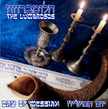He always lives to make intercession for them.
Contrary to what is commonly assumed, the five offerings described in the beginning of the Book of Leviticus are not meant for sin atonement. While some of them portray acknowledgment and confession of sin, others are simply statements of thankfulness, gratefulness, praise, and dedication. The main atonement offering in the Levitical system is what is called the 'Tamid', the daily perpetual morning and evening offering (Leviticus 6:8-13).
Like two book ends, the 'Tamid' opened the day's offerings, and closed it. These two offerings are the foundation of the two main prayer services in the Temple, and are still today the origins of synagogue services. When Luke in the Book of Acts mentions, And day by day, attending the temple together and breaking bread in their homes … (Acts 2:46), he says that the disciples attended these services based around a lamb offering. Peter and John are also mentioned going to the temple’s evening service (Acts 3:1). This teaches us that the disciples continued to attend Temple services and liturgies after Yeshua’s resurrection.
The two lambs offered one in the morning and one in the evening provided a continual 'lamb' presence on the altar before God. Those who did not come to the Temple prayed in synchronicity in their homes facing Jerusalem.
It is important now to notice that at His last Passover on earth, our Master was nailed to the cross at the very time the priests were offering the morning offering. Then all day while Yeshua was on the cross, throngs of locals and pilgrims offered their Passover lambs. The Mishnah records that at the end of the ordeal towards mid-afternoon, the High-priest who worked hard in the hot Jerusalem sun says, 'I thirst', and is offered a drink. He then exclaims, 'it is finished'. Our Master concurred these very words while on the cross then remitted His Spirit to His Father at the very time of the evening offering that closed the day's services (Mark 15:25,33,34). On that evening, as Yeshua was put in the tomb just before dusk, Jewish families put their striped and pieced unleavened breads in ovens.
The Tamid is therefore a perfect picture of the text in the Letter sent to the Messianic believers of Jerusalem, Consequently, he is able to save to the uttermost those who draw near to God through him, since he always lives to make intercession for them (Hebrews 7:25). Yeshua truly stands at the right hand of the Father always ready to intercede for us because, The prayer of a righteous person has great power as it is working (James 5:16).
 RSS Feed
RSS Feed


